Gluten Free
What does following a gluten-free diet mean? That you're embarking on an easy diet with a wide range of health-promoting effects. Instead of dwelling on what you’re giving up, consider that you’re going to enjoy a whole new world of delicious food options to meet your special dietary needs. You’ll be eating seasonally, choosing more fresh fruits and vegetables, focusing on meats, seafood, poultry, legumes, lentils, corn, and rice, and discovering fascinating ancient grains such as quinoa, amaranth, and millet. You’ll be able to eat potatoes, eggs, most cheeses, even chocolate (!)—and enjoy them without guilt because you’ll be taking good care of your body. In fact, you’ll probably end up eating—and feeling—better than ever!
Visit this page for more information about living Gluten Free
---
We carry a large variety of gluten free items, the brands listed below represent just some of the offerings we carry









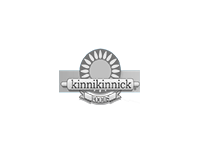
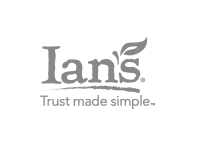
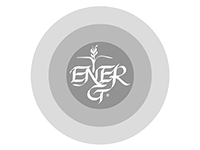

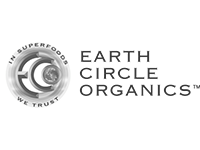

More Diets
Tension Headache
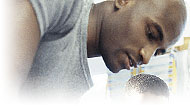
About This Condition
A tension-type headache is common and typically experienced as a dull, non-throbbing pain in the back of the neck or in a “headband” distribution.1 It may be associated with tender nodules in the neck called trigger-points,2 or with tenderness in the muscles around the head.3
Symptoms
People with a headache may have symptoms including uncomfortable sensations described as pain, throbbing, aching, dullness, heaviness, and tightness in the head. People with a headache may also experience discomfort that is often worsened by movement or pressure and may be associated with irritability, problems sleeping, and fatigue.
Healthy Lifestyle Tips
Tension-type headaches often occur more frequently and may become more severe during or following times of mental or emotional stress.4, 5, 6 Several controlled studies have found tension-type headache sufferers to report higher levels of stress,7, 8, 9 and to have significantly higher levels of depression or anxiety,10, 11, 12 significantly greater levels of suppressed anger,13 or significantly greater muscle tension14, 15 than those without headaches. Minimizing stress and getting enough sleep and regular exercise are often recommended to people with tension-type headaches. However, no research has investigated the effectiveness of these lifestyle changes.
One controlled study that included patients with muscle-contraction headache as well as other types of headache, revealed that smokers had significantly more severe headache episodes than nonsmokers.16 Although other studies have not found an association between smoking and headaches, stopping smoking is always a good idea for many health reasons.
Holistic Options
Studies treating tension-type headache with acupuncture have had mixed results.17 Two controlled trials of acupuncture compared to “fake” acupuncture found either significantly more pain reduction from real acupuncture18 or no difference between the two treatments.19 Two trials comparing acupuncture to traditional physical therapy (relaxation techniques, self-massage, cold therapy, transcutaneous electrical nerve stimulation [TENS], stretching, and/or preventive education) in tension-type headache patients found similar improvements from either treatment.20, 21 Three controlled acupuncture trials treated patients with various types of headaches, including tension headache. Two of these studies,22, 23 but not the third,24 found acupuncture significantly more effective.
Two preliminary studies25, 26 reported benefits from using finger pressure on specific acupuncture points (acupressure) to relieve tension-type headache pain in some patients. However, no controlled research on this approach has been done.
Spinal manipulation may also help some tension-type headache sufferers. Several preliminary studies report reduction in frequency and severity of tension-type headaches with spinal manipulation.27, 28, 29, 30, 31, 32 A controlled trial compared spinal manipulation to drug therapy for tension-type headaches.33 During the treatment period, both groups improved at similar significant rates, although the manipulation group complained of far fewer side effects. After a month following the end of treatment, only the manipulation group showed continued improvement. In another controlled trial, spinal manipulation resulted in fewer headache hours each day, decreased use of analgesics, and less intense pain per episode compared with massage.34 A third controlled study reported that spinal manipulation with muscle massage was equally as effective as massage plus a “fake” laser treatment, suggesting that manipulation did not provide additional benefit.35
As mentioned above, two controlled studies found physical therapy (relaxation techniques, self-massage, cold therapy, TENS, stretching, and/or preventive education) as useful as acupuncture in significantly reducing headache pain and frequency.36, 37 A preliminary study also found that physical therapy, consisting of posture education, home exercises, massage, and stretching of the neck muscles, significantly improved tension headaches up to 12 months after treatment ended.38 Another preliminary study of massage, including deep penetrating techniques, reported significantly decreased pain in patients with chronic tension headache and neck pain.39 A controlled study of headache patients with muscle spasm in the neck and shoulders found that adding TENS to physical therapy (consisting of heat packs, massage, and ultrasound) brought a significantly faster and greater decline in headaches than physical therapy alone.40
Several controlled trials utilizing electromyogram (EMG)-biofeedback (which teaches people how to mentally relax their neck or head muscles) have shown this treatment to be helpful in about 50% of tension-type headache sufferers, both in adults41, 42, 43, 44, 45 and in children and adolescents.46, 47 Progressive muscle relaxation is another muscle relaxation technique that has significantly reduced tension-type headache in controlled studies of adults,48, 49 and children and adolescents.50, 51
Relaxation with techniques for stress management was found to be significantly better than drug therapy in a controlled trial of chronic tension-type headache sufferers,52 although about half of all subjects continued to have headaches three to four days per week after the end of treatment.
Hypnotherapy was found to significantly reduce headache intensity and duration in chronic tension-type headache sufferers in one controlled trial.53
A large controlled study of tension headache patients compared relaxation therapies (including progressive muscle relaxation, hypnosis, and cognitive psychotherapy) with EMG-biofeedback, and found biofeedback to be significantly more effective than relaxation in decreasing headache pain and frequency.54
In a controlled trial, therapeutic touch, a type of hands-on healing, was found to significantly reduce tension headache pain for four hours following treatment.55 No further research has been done on this approach.
Reflexology, a specific treatment involving massage of various reflex zones on the feet, has only been investigated as a treatment for tension-type headache in one preliminary trial.56 A majority of people treated in this study reported being helped by this technique.
A controlled trial of homeopathy in headache patients, including tension-type headache, found no significant benefit of homeopathy compared to a placebo group.57
Copyright © 2024 TraceGains, Inc. All rights reserved.
Learn more about TraceGains, the company.
The information presented by TraceGains is for informational purposes only. It is based on scientific studies (human, animal, or in vitro), clinical experience, or traditional usage as cited in each article. The results reported may not necessarily occur in all individuals. Self-treatment is not recommended for life-threatening conditions that require medical treatment under a doctor's care. For many of the conditions discussed, treatment with prescription or over the counter medication is also available. Consult your doctor, practitioner, and/or pharmacist for any health problem and before using any supplements or before making any changes in prescribed medications. Information expires December 2024.











